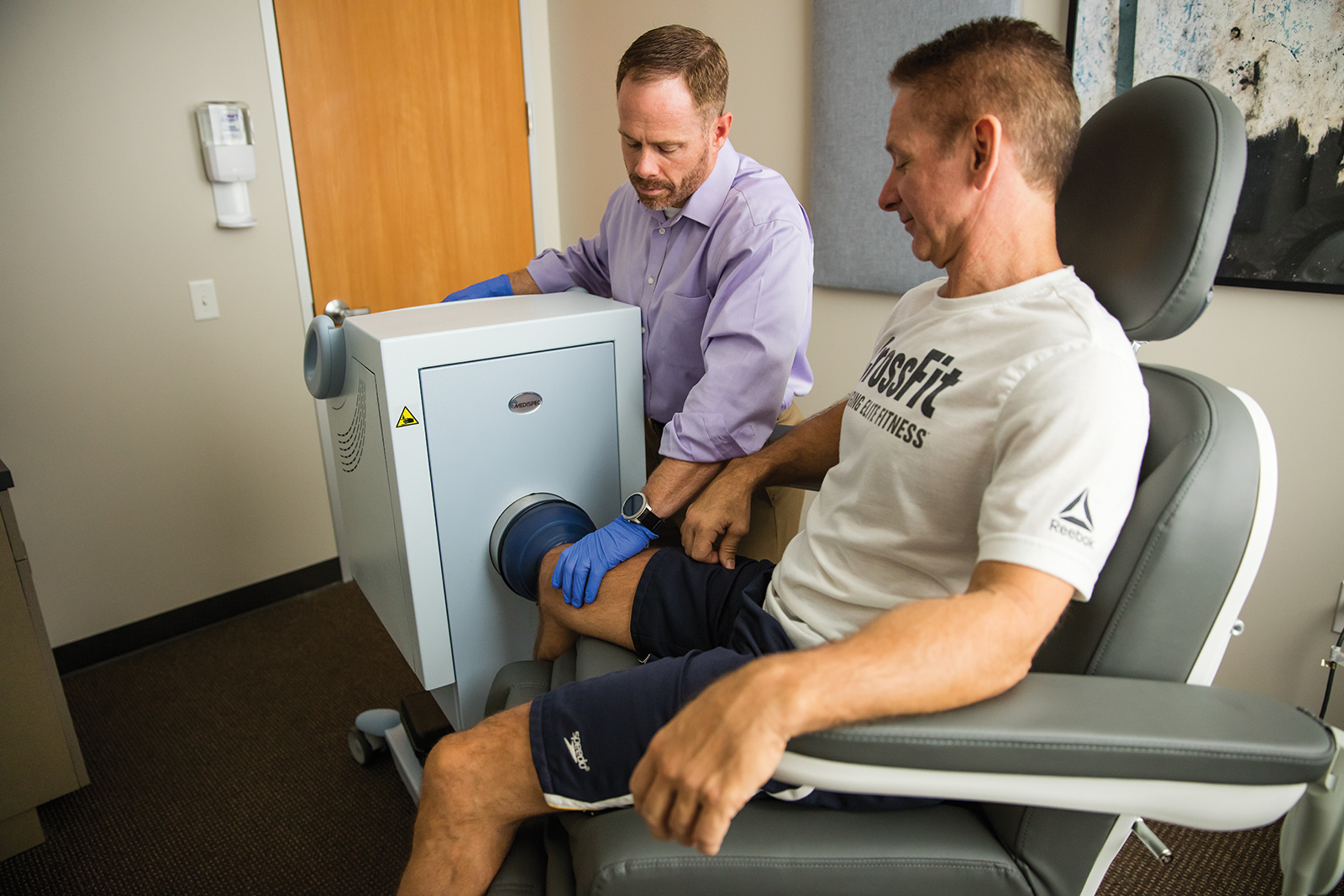Wellness FAQ: Osteoarthritis

Millions of Americans — and undoubtedly many of AFM readers — suffer from the debilitating effects of osteoarthritis. But new research and treatments are helping those with OA get active again.
We discussed osteoarthritis with Dr. Ryan Sieg, Orthopedic Surgeon and Medical Director of Sonex Orthopedics and President, Sean Vieira.
AFM: What is Osteoarthritis (OA)?
Dr. Sieg: OA is a degeneration of the articular cartilage and the underlying subchondral bone that causes pain and loss of function to the affected joint. As it progresses over time, the cartilage can completely wear away leading to bone-on-bone and additional damage and pain.
AFM: We always hear about the cartilage, but why is subchondral bone important?
Dr. Sieg: The articular cartilage is basically the cap of the bone at the surface of a joint that provides the smooth surface for motion and shock absorption, and is typically all that is thought to degenerate with OA. The subchondral bone is the bone directly adjacent to the cartilage that provides the blood supply and nourishment to the cartilage. With OA, the subchondral bone becomes hypomineralized (deficient in minerals) due to a lack of blood flow and healing factors, and develops cysts (voids) and subchondral sclerosis, which is the abnormal hardening of the interface between the cartilage and the bone. This contributes to further degeneration of the cartilage that it is responsible for nourishing.
AFM: How is OA traditionally treated?
Dr. Sieg: There is no cure for OA. Patients usually progress from NSAIDs to viscosupplements or cortisone injections to joint replacement. Of course, replacement is where the cartilage and subchondral bone are removed and replaced with plastic or metal. It is a high-risk surgery, the joint doesn’t function as well, and the parts don’t last forever. There is also a risk of infection. That is why it is normally reserved for patients over 60.
AFM: Tell us about your OsteoWave treatment, what is it?
Sean: OsteoWave is our High-energy Shock Wave Therapy (HeSWT) treatment for OA. With our FDA approved device, we apply focused high-energy acoustic waves to the arthritic joint to increase blood flow and stimulate the body’s regenerative process. The treatment results in a significant decrease in pain and increase in function of the affected joint. It is completed in office and lasts about 30 minutes with only 1-3 treatments required depending on the severity of OA.
AFM: How does OsteoWave help with OA?
Sean: Many OA treatments focus on the soft cartilage without consideration given to the injured subchondral bone just under the cartilage, which is responsible for the nourishment of the cartilage. HeSWT was proven long ago to successfully treat non-union bone fractures by stimulating the development of new blood vessels and formation of new bone. It essentially makes the sick bone healthy again. The defects found in non-union bone fractures are the same as those found in subchondral bone with OA. With OsteoWave, we improve the health of the subchondral bone that is responsible for the health of the adjacent cartilage to provide long-term relief.
AFM: What about Stem Cell therapy and injections?
Dr. Sieg: Stem Cell therapy attempts to treat the cartilage with immature cells that in theory are supposed to figure out how to turn into mature joint cells and heal the degenerating cartilage. It is very expensive and carries a risk of infection because it is injected into the joint with a needle. There are no studies showing it to be more effective than a placebo for any joint injury. There is also strong evidence against the use of other joint injections according to the American Academy of Orthopedic Surgeons because they do not provide any significant benefit. This will likely be the same for Stem Cell therapy as the cells die off within a few days and any relief is short-lived. By comparison, OsteoWave is less expensive, non-invasive and has over 20 years of research supporting its safety and efficacy for numerous musculoskeletal injuries.
AFM: Anything else you would like our readers to know?
Sean: If you are suffering from mild to severe osteoarthritis and would like a non-invasive treatment that will decrease your pain and increase your function, give us a call. You now have an option to drugs, injections and surgery for relief. We would love nothing more than to help you get back to life pain free.






